Just Text Me
Text is now the preferred method of communications for U.S. adults. It has a 99% open rate compared to email’s 20% (at best), making it a far more effective form of communication. However, most dealerships’ websites still have countless clever – and annoying – ways to attempt to get a consumer to fill out a lead form. I get it, but it’s time to think like customers living on mobile devices in 2019. Ask yourself: when was the last time you filled out a form or chatted with a company from your mobile device? Now — when was the last time you sent a text?
Some dealers have a basic widget on their site allowing customers to text their major departments. That’s a start, but it’s an overlay or pop-up that often interferes with the user experience and must be closed in order to navigate. Like most things in our industry, these widgets stand alone and don’t integrate with a dealership’s customer database. For text to really work, it must integrate with your most important database and be prolific in ALL your advertising.
Heeding these new stats, we recently developed a new texting platform for consumers and dealers within the Apollo platform, aptly named Apollo Text. This is a quick overview of how it works and why it is performing better for our dealerships than the 3rd party widgets they used before.
If you want to substantially increase engagement from your marketing as well, I suggest following these five winning principles of text:
1. Integration. Integrate a “text us” option throughout all your advertising mediums. Give your consumers the option to text your dealership(s) everywhere – search ads, video, email, direct mail, Google Business Listings, and all the major areas of your website. This way, your customers know it’s a legitimate and even preferred option for them to engage with your dealership. You will immediately receive more texts from in-market consumers that have not yet visited your website but have engaged with your marketing. See below for examples.
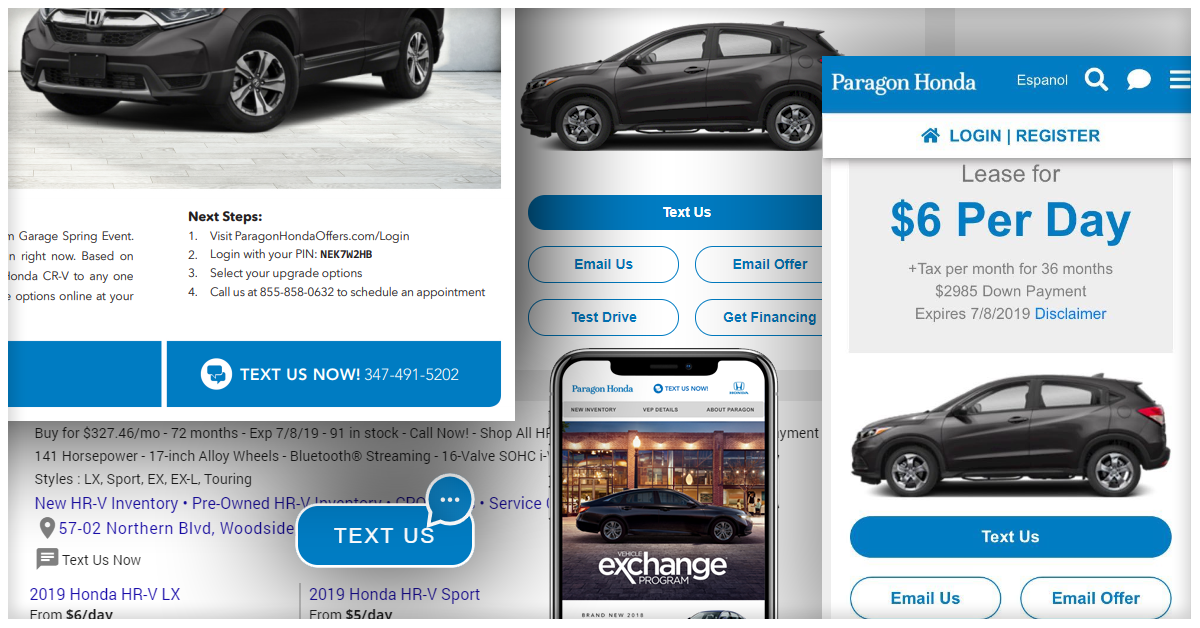
2. Customer Identification. This is key. Make sure you have a texting application that cross-references the inbound text number with your customer database. Most consumers only have one mobile device, so chances are, if they have ever done business with you, their mobile number is already in your database. Today, about 50 percent of all inbound texts are from customers that can be easily identified by cross-referencing their phone number. By instantly identifying the customer your team can review all available and relevant data before formulating a response. This is what makes text so much more powerful than any other engagement or method of communication. From a simple inbound text, you can learn everything about the consumer before you respond. For example, vehicle history, trade value, equity position and more.
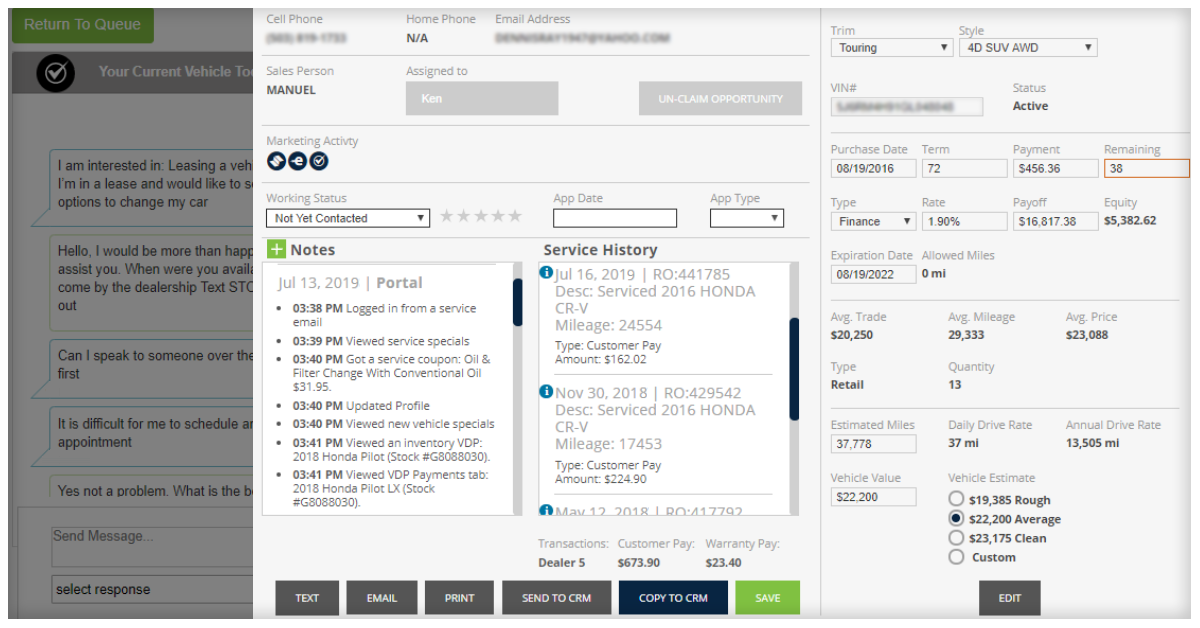
3. Customization. Customize your inbound text options with custom and/or pre-populated responses to match what’s most important to your customers – current offers and promotions. For example, if you are offering a $39.95 oil change or Free Pick Up and Delivery, make that an option for your service texts. Or, if you have a promotion for $500 in Bonus Cash, make those readily available options as well. Your platform should be flexible enough to be updated instantly.
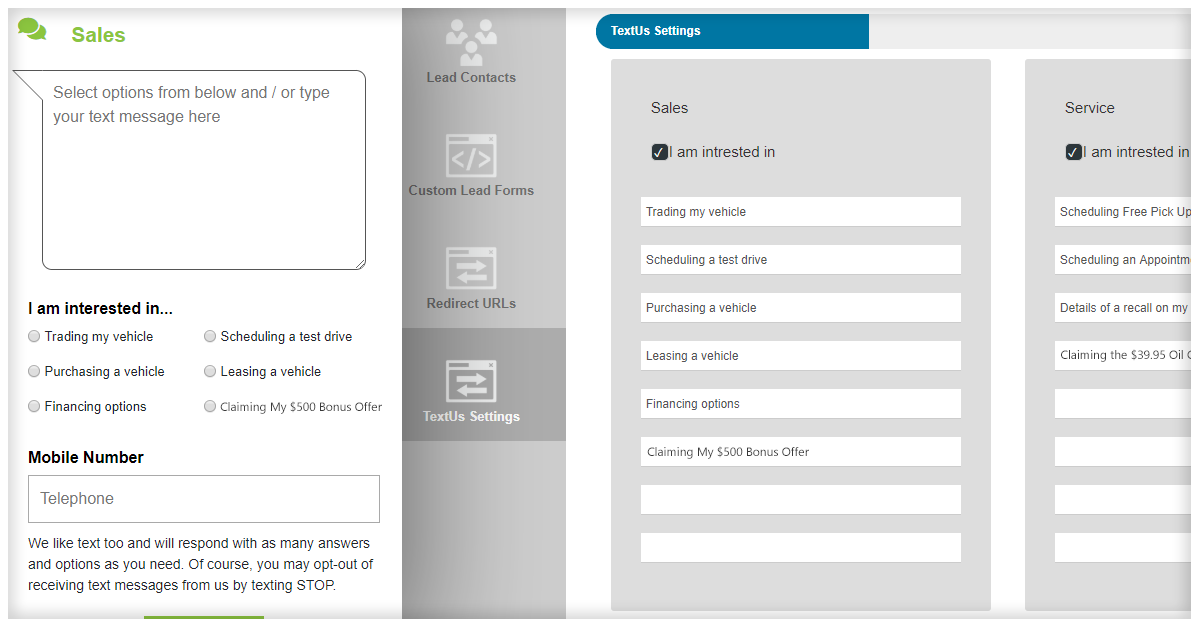
4. Automation. Text is about quickly giving the customer the information they need. Make sure you have pre-populated all the typical and most common responses ahead of time so you can rapidly respond to their inquiry. See below for some examples.
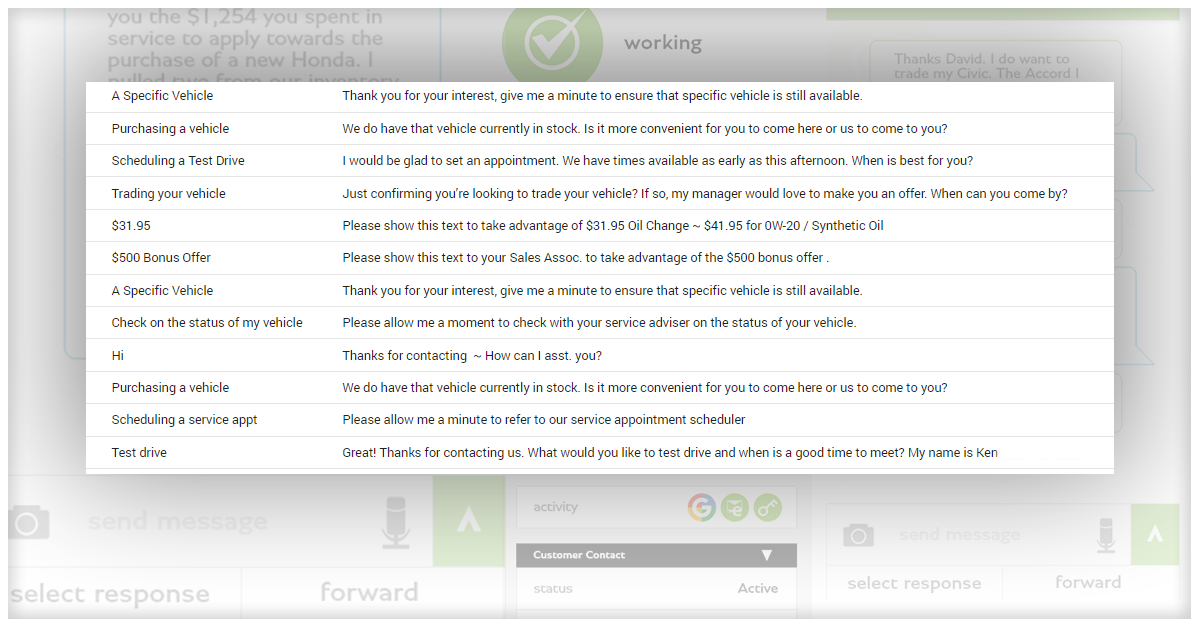
5. Attribution. Attribution is the very best part of text. Retrieving a mobile number during any engagement (sales or service) makes it easy to attribute your marketing to a transaction and determine an ROI. A reliable mobile number is one datapoint a dealership almost always receives during the sales or R.O. (repair order) process. Your platform should automatically provide you with a match report that enables you to see which marketing initiative your customers are responding to (Google, Microsoft, VDP, Email, Mail, POS, TV, etc.).
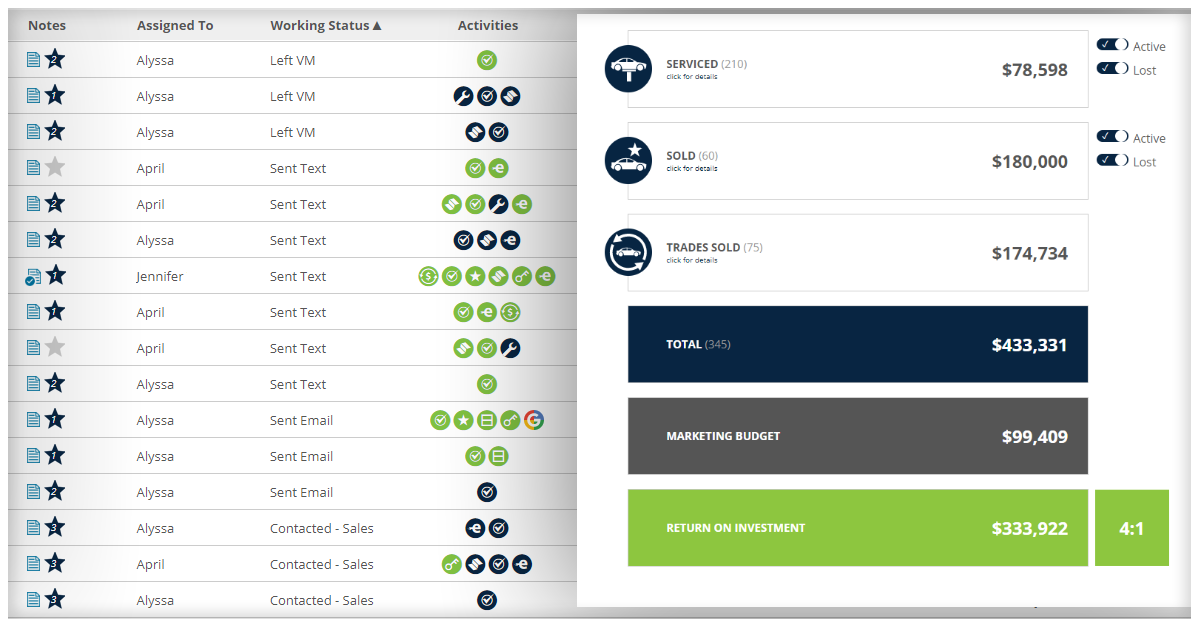
So, not only do many customers prefer to begin and end their engagements with text, it’s also the best datapoint your dealership can gather. The ability to cross-reference consumers unique mobile numbers against your sales and service transactions make text the most reliable way to attribute an ROI to all your marketing and advertising efforts.
No matter who you work with, if you follow these five principles for text, I guarantee you will see an increase in qualified leads, response-rate, and ROI attribution.
David Boice
Founder and CEO


